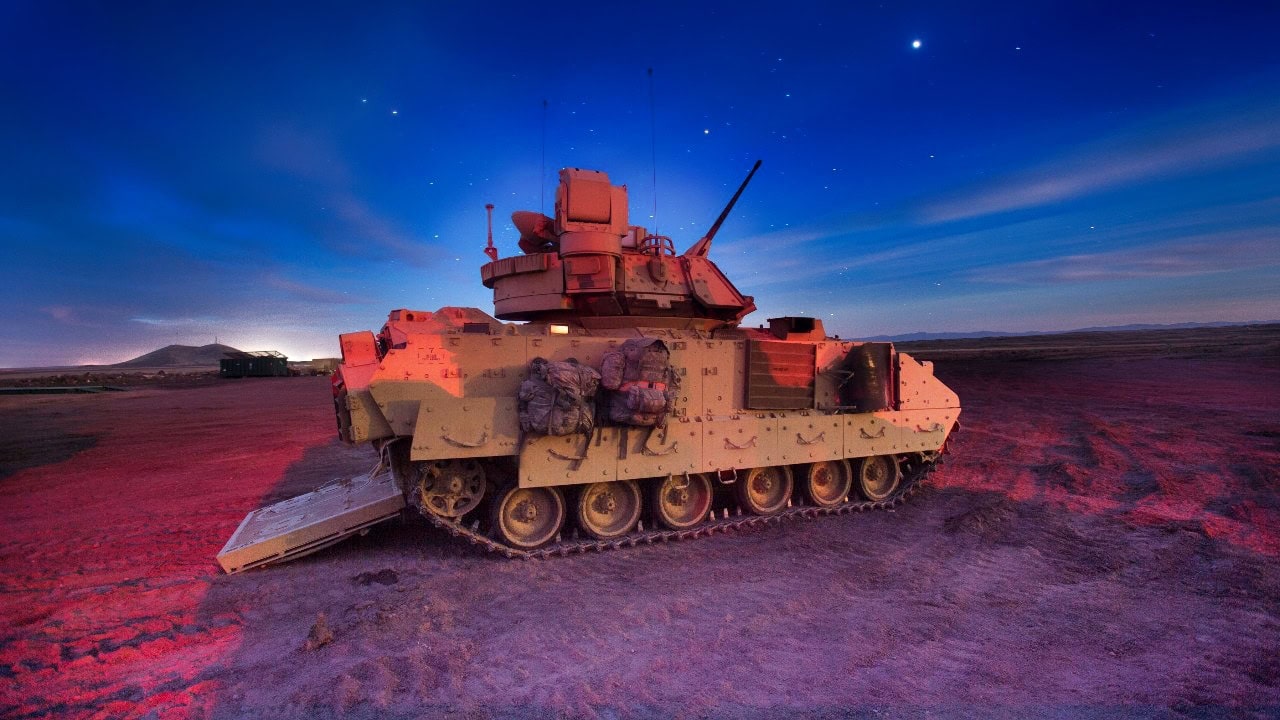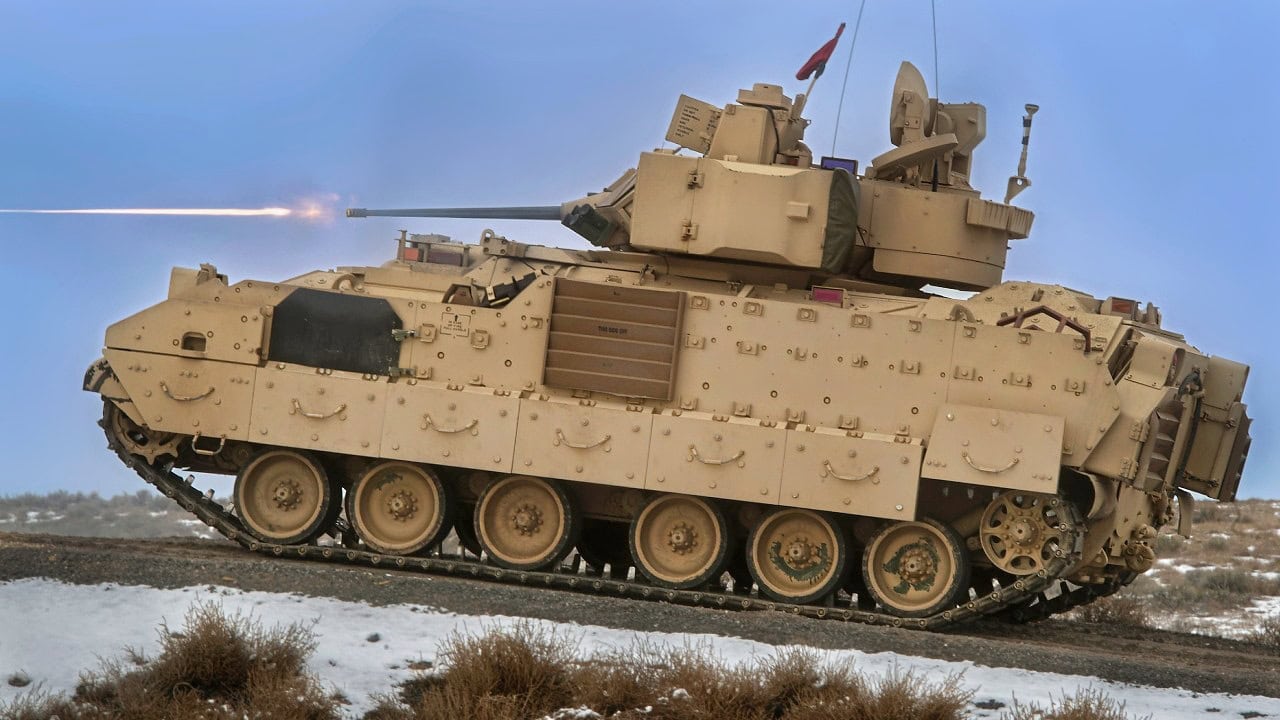Key Points and Summary: The XM-30 Mechanized Infantry Combat Vehicle is the U.S. Army’s ambitious plan to replace the aging M2 Bradley IFV.
-Featuring a hybrid-electric drive, AI-assisted fire control, and an unmanned turret with a 50mm autocannon, the XM-30 promises enhanced mobility, firepower, and adaptability.
-However, with an estimated $45 billion program cost, concerns over budget overruns and integration challenges loom large.
Meet the XM-30: The Future of U.S. Mechanized Infantry Combat
The XM-30 Mechanized Infantry Combat Vehicle (MICV) is a cutting-edge project initiated by the U.S. Army to replace the aging M2 Bradley Infantry Fighting Vehicle (IFV), which has been in service since 1981.
The project was contracted to General Dynamics Land Systems (GDLS) as American Rhinemetal Vehicles. Both Contracts are approximately at $1.5 billion.
The XM-30 aims to enhance operational capabilities on the battlefield through advanced technology and modular adaptability.
The XM-30 Project: An Overview
The XM-30 is designed as a next-generation infantry fighting vehicle with several key features. It includes a hybrid-electric drive that provides improved fuel efficiency and operational range.
The vehicle is equipped with an unmanned turret, featuring a 50mm autocannon, or a 30mm turret with the ability to upgrade to a larger caliber.
The XM-30 requires a reduced crew size of two (driver and commander) and can transport six infantry personnel. Additionally, it boasts an AI-driven fire control system that enhances targeting accuracy and response times.
The vehicle’s modular open system architecture allows for future upgrades and integration of new technologies.
Why the Army Wants the XM-30
The U.S. Army’s interest in the XM-30 stems from several strategic and operational needs. Modernization is a key factor, as the M2 Bradley, according to some, has reached its technological limits.
While still a great IFV, the Bradly has aged, making it difficult to integrate new electronics, armor, and defensive systems. The XM-30 seeks to offer a modern platform that can accommodate future advancements.
Enhanced capabilities are another reason, with the XM-30’s advanced electronic features providing significant improvements in mobility, firepower, and operational efficiency.
The vehicle’s flexibility and adaptability are crucial in modern warfare, where threats and technologies evolve rapidly.
The modular design allows for easy upgrades and customization based on mission requirements. Furthermore, the XM-30 aims to improve operational efficiency and reduce the risk to personnel with its reduced crew size and increased automation.
Proceed With Caution
Despite its promising features, the XM-30 project faces several potential challenges. Developing a vehicle with such advanced capabilities involves significant technical challenges.
Ensuring the reliability and effectiveness of the hybrid-electric drive, AI systems, and modular components requires extensive testing and refinement.
The project is also a substantial financial investment, a potential death knoll for any up-and-coming military project, with the total program value estimated at $45 billion. Managing costs and avoiding overruns will be critical to the project’s success.
Ensuring that the XM-30 can seamlessly integrate with existing and future military systems is essential, including compatibility with other vehicles, communication networks, and battlefield management systems.

Engineers with the 116th Brigade Engineer Battalion conduct M2A3 Bradley fighting vehicle gunnery qualification on March 27, 2018, Orchard Combat Training Center, south of Boise, Idaho. Combat engineers with the 116th BEB trained through gunnery table XII, evaluating their ability to execute collective platoon-level tasks in a tactical live-fire environment; including integrating dismounted soldiers with their assigned BFV. (U.S. Army National Guard photo by 1LT Robert Barney)
This is also not the first time the Army has attempted to replace the Bradley. Previous projects, such as the Future Combat System (FCS) and Ground Combat Vehicle (GCV) programs, were canceled due to cost overruns and programmatic challenges.
Learning from these past failures and implementing effective project management strategies will be a crucial factor in deciding whether this project ever sees the light of day.
Additionally, the XM-30 must be capable of countering emerging threats, such as anti-tank guided missiles (ATGMs) and unmanned aerial systems (UAS).
The designers of the IFV expressed interest in integrating advanced active protection systems (APS) to ensure the vehicle’s survivability in modern combat scenarios.
Potential Game Changer?
The XM-30 project represents a significant step forward in modernizing the U.S. Army’s mechanized infantry capabilities.
With its advanced features and modular design, the XM-30 aims to provide enhanced operational efficiency, flexibility, and adaptability on the battlefield.

The Bradley Fighting Vehicle cuts loose several rounds from the 25mm main gun on the orchard Combat Training Center Range.
Soldiers completed training this week of the Bradley Commanders Course with the 204th Regional Training Institute, (RTI), of the Idaho Army National Guard on Gowen Field. The course is designed to train active duty, reserve and national guard officers and non-commissioned officers in combat critical M3 Bradley Fighting Vehicle Commander Skills. Field exercises were conducted on the newest Range 10, the Digital Air Ground Integrated Range (DAGIR), on the Orchard Combat Training Center grounds.
However, the project must navigate various technical, financial, and strategic challenges to achieve its goals.
By addressing these challenges and leveraging lessons from past programs, the XM-30 has the potential to become a cornerstone of the U.S. Army’s future combat operations.
About the Author: Isaac Seitz
Isaac Seitz, a 19FortyFive Defense Columnist, graduated from Patrick Henry College’s Strategic Intelligence and National Security program. He has also studied Russian at Middlebury Language Schools and has worked as an intelligence Analyst in the private sector.

